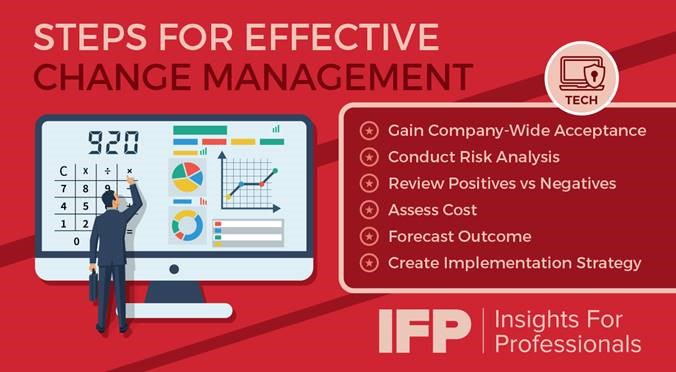The only thing constant in the IT world is change. With tech pros engaged in a seemingly never-ending task of implementing new solutions and upgrading existing systems, it can be difficult sometimes to ensure everyone else is keeping up.
This can be particularly true when you're embarking on more major initiatives that will have a significant impact on the way employees across the business work day to day. In these cases, it's important to manage not just the technical aspects of implementing new systems, but also the cultural ones.
If people don't understand the benefits of the new IT system, or feel it will be a radical departure from the way of working they're used to, they are likely to be resistant. Some estimates suggest up to 70 percent of organizational change projects fail to meet their targets, with factors such as lack of management buy-in, employee resistance and inadequate resources all cited as barriers.
Therefore, having a comprehensive change management strategy in place that will govern all aspects of this process is essential. With this in mind, here are a few key tactics that should be a part of every business' IT change management plans.

1. Clearly define your goals - and your route to them
It might seem obvious, but too many major projects get underway with only a vague idea of what the company is trying to achieve. Goals such as 'bringing our IT infrastructure up to date' or 'reducing costs by a third' may be the desired endpoints, but they are often either hard to measure or unclear enough that they may always be unreachable, so it's no wonder so many projects fail. Putting in place clear and realistic goals that can be measured throughout the process helps give your change management plans direction and focus.
2. Don't sell it as purely an IT project
Even though IT is now integral to everything a business does, a lot of people outside the department still see it as a back-office function, and this can hinder efforts to ensure that change is embraced throughout the company. From the very start, planning and goals need to emphasize what the project will offer to other departments, and - crucially - what other parts of the business will be expected to do in order to ensure its success.
3. Ensure everyone is involved
Part of ensuring changes reach beyond the IT department means making certain that everyone in the company has a say in the project, all the way from the boardroom down to the individual users who will be expected to work with new solutions every day. Getting executive buy-in is especially important, as employees are less likely to be resistant to the initiative if they can see it has top-level support. But the needs of end-users shouldn't be overlooked. Therefore, it's important to set up working groups early and get feedback from all levels about what's working and what still needs improvement.
4. Identify internal champions of change
One great way to get people on board with change is to identify a few people within the business with enthusiasm for the project and recruit them to help champion the idea to the rest of the company. Putting individuals with passion at the heart of your change management strategy can help lower employee resistance and give a boost to worker buy-in, especially if front-line employees are the ones to be promoting change, as they will have a first-hand understanding of what is required and will be better able to anticipate and react to any objections that people outside the department may miss.
5. Keep the momentum going
Change doesn't end once new initiatives hit production. In fact, it is the period after the rollout of any new tech solution that the real challenges may lie. If the rollout isn't handled properly - including training users on new technologies and taking steps to ensure they are actually used - people may well attempt to persist with the old way of doing things. To counter this, consider offering incentives for switching to the new technology and rethinking how you train people, perhaps using ideas like gamification to help ease the transition.
Access the latest business knowledge in IT
Get Access






Comments
Join the conversation...